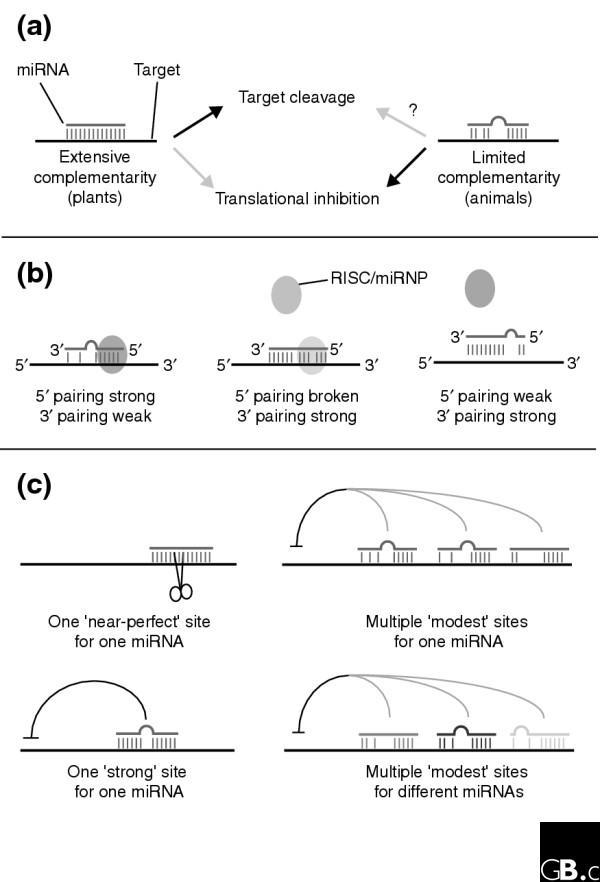Figure 1.

Complementarity of miRNAs and their targets. (a) Two classes of miRNA-binding site. Some miRNA-binding sites have extensive, near-perfect complementarity to miRNAs (left), whereas other miRNA-binding sites display only limited pairing to a miRNA (right). In many cases, the former leads to target cleavage while the latter causes translational inhibition (black arrows), although converse examples have also been described (gray arrows). Plant miRNAs commonly show extensive pairing to targets, whereas this is exceedingly uncommon for animal miRNAs. (b) Strong canonical base-pairing to the 5' end of a miRNA (nucleotides 2-8) is important for regulation of sites with limited complementarity. This is presumably due to specific recognition of the 5' end of the miRNA-target duplex by components of the RISC/miRNP complex (oval). It should be noted that RISC/miRNP may have physical contact along the entire miRNA:target duplex. An approximately seven-nucleotide duplex with the 5' end of a miRNA may in fact be sufficient for target recognition (left). Imperfect 5' pairing renders most sites nonfunctional, although in some cases, site functionality is 'rescued' by sufficiently extensive 3' pairing (middle). Sites that lack strong 5' pairing are nonfunctional, regardless of the degree of 3' pairing (right). (c) Examples of different configurations of miRNA-binding sites. Individual sites need to be considered within the milieu of other miRNA-binding sites present on a given transcript. Single sites can suffice for target cleavage (upper left) or strong translational inhibition (lower left), but these are typically 'near-perfect' or 'strong' sites that present extended complementarity to the miRNA. Multiple 'modest' sites that maintain 5' pairing to the miRNA can act synergistically and together confer strong regulation (upper right). Some transcripts contain multiple binding sites for different miRNAs (designated in different shades), which might also function synergistically (lower right).
